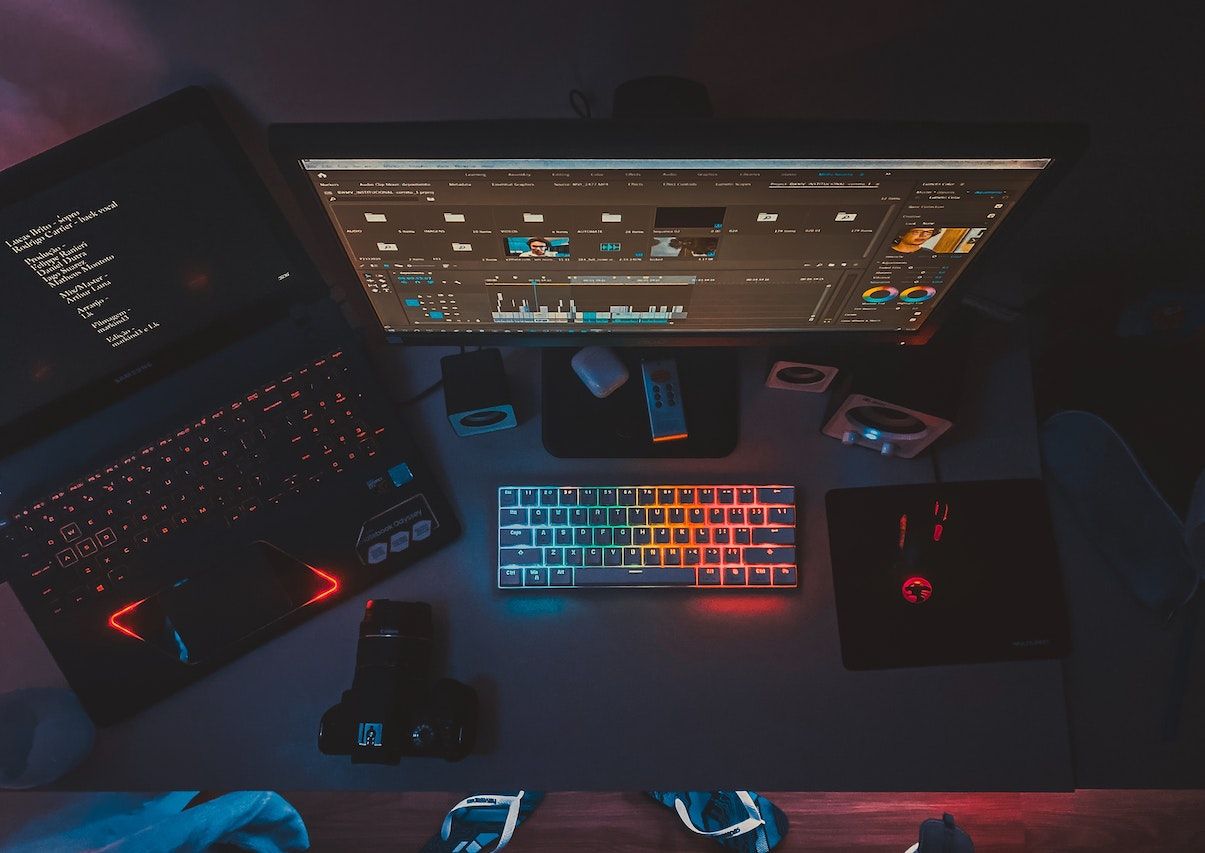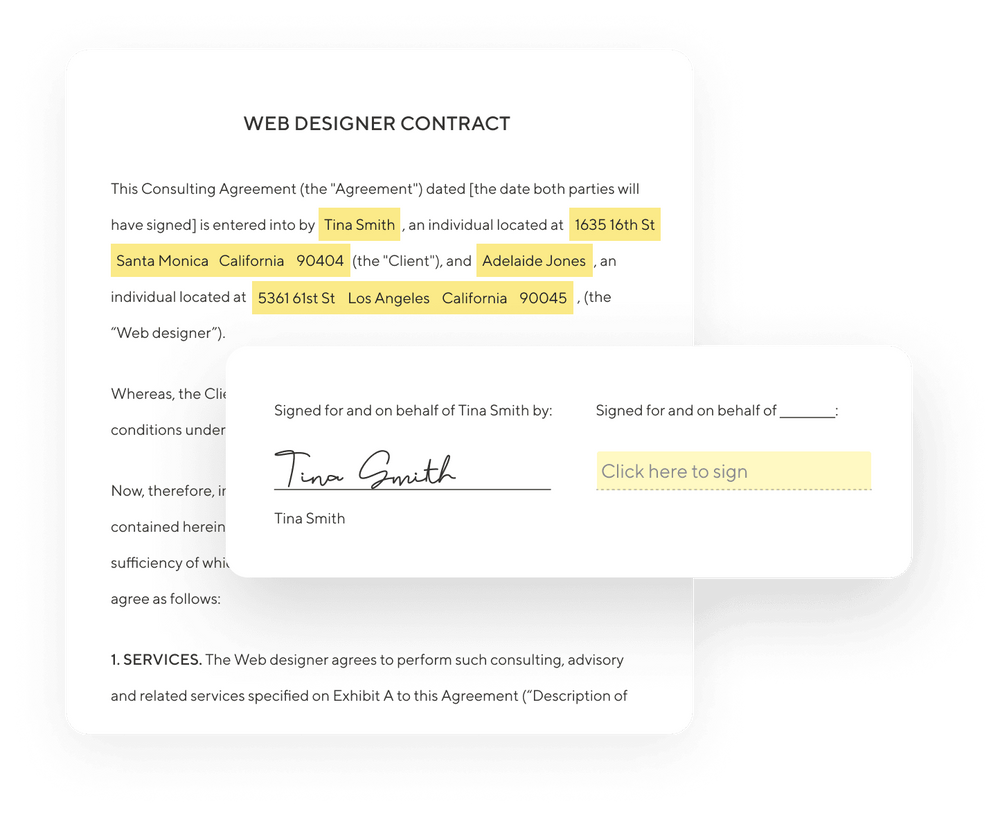Freelance graphic designers need to understand that copyrights and intellectual property are essential in protecting their work and being compensated fairly. This comprehensive guide will cover the basics of copyright protection, intellectual property, and the legalities involved in both topics.
You'll learn the differences between registered and unregistered copyrights, how to register a copyright, common copyright misconceptions, and the basics of intellectual property. We'll also discuss how to protect your work and how to ensure you're compensated fairly. With the right understanding and application of copyright and intellectual property laws, you can feel confident in your designs and your career.
Introduction to intellectual property for freelance designers
Copyrights and Intellectual Property (IP) are often used interchangeably, but they are not technically the same thing. Copyright protects the creative work, and IP protects the creative process.
While both copyright and IP are important for creative professionals, IP is more relevant to the creative process and workflow than the finished work.
IP can be broken down into two parts—Patents and Trademarks. Patents are granted by the government to protect inventors and allow them to maintain a monopoly on their inventions for a set amount of time.
Trademarks are used to protect brand identity and differentiate your company or product from the competition.
Understanding copyright protection for original artwork and designs
Owning the copyright to your designs allows you to do what you want with the design, including selling it or licensing it for use outside of your business. However, if you don’t have a copyright on the work, the design could be protected by a design patent, trademark, or both.
If you don’t have a registered copyright on your work, it is possible for someone to steal your designs and profit from them. The only difference is that if you decide to take legal action, you would have to prove that the design is an “invention” (a tangible form) and not just an artistic creation. This can be difficult as the legal standard for an “invention” is quite high.

Protecting your work with the copyright registration process
In order to fully protect your work and enable fair use, you must register your copyright.
There are two types of copyright registrations: “regular” and “online.” To register regularly, you need to file a form and send in a physical copy of your artwork. The regular registration is valid for 95 years from the creation of the work. There is a filing fee you'd need to pay.
You can find online the registration done through the US Copyright Office website and file for copyright registration. There is a filing fee, but once registered, the copyright lasts for the same amount of time as a regular registration.
Exploring trademark protection for your brand
A trademark is a word or symbol that identifies a product or service and distinguishes it from the products or services of others.
Trademarks are a good idea for any business that has a visual aspect, such as a logo. Trademarking your business name or logo is not something every freelancer needs to do, but it is recommended if you think you will grow your business large enough to make it worthwhile to protect your brand.
Trademarks are registered with the government and can be renewed every 10 years.

Understanding patent protection for inventions and innovations
Unlike copyrights and trademarks, patents are only valid for a set amount of time and are meant to incentivize innovation.
After the patent expires, it becomes a public record, and anyone can develop their own version of the original product and call it a creative expression.
Patents are also only applicable in the country in which they are registered. While a patent does not protect against copyright infringement, it does offer some legal protection against other patents infringing on your invention.
Navigating licensing agreements and contracts as a freelancer
Many clients may ask you to sign a contract or a licensing agreement before they hire you.
If you are signing a contract, it is important to read through it and ensure that it states exactly what you want and that you agree to the terms.
Licensing agreements are designed for the client to protect their product and be able to use your work as they see fit. If you are licensing your work and are protected by copyright, it is a good idea to have a contract drafted as well.
Indy offers the tools you need to manage contracts and your IP during a project. First, you can use Indy’s free Contracts tool to write new contracts. Templates are available, or you can copy your own contracts into the editor. After you’ve crafted an ironclad contract, you can use Indy to send it, track signatures, and file it for future reference.
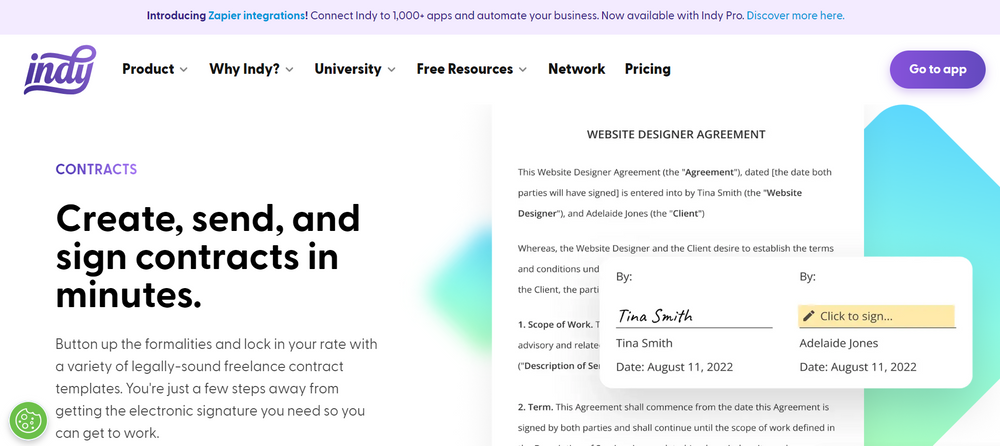
Second, Indy has a simple Files tool. This is a great way to share your work with your clients and track their sign-off as the project moves forward. Keeping your files in one place and tracking signatures helps protect your work by giving you visibility of your IP storage.
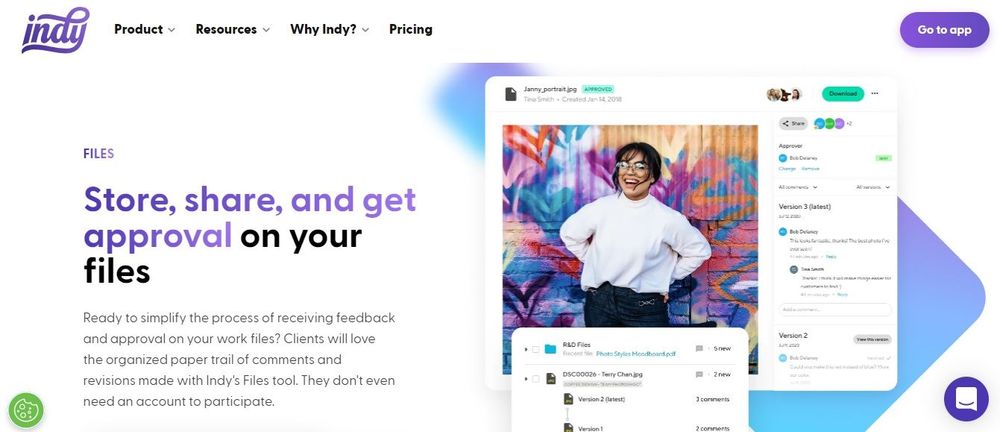
Protecting your intellectual property in the digital world
Online content, websites, and social media accounts can all be a source of copyright infringement.
If you see something on the Internet that is substantially similar to your publication (for example, a motion picture with your design or sound recordings), you can report it to the host of the website and ask them to remove the content.
If the website is removing the content, they will likely delete your account as well. If the website is not removing the content, you can send them a DMCA Takedown Notice.
These notices, sent to the website host, state that the content is infringing on your copyright and should be removed. The notice also includes your contact information and the original source of the content.
Dealing with intellectual property and copyright infringement as a freelancer
If you find that your work has been copied and used illegally, there are a few things you can do. First, you must determine if the infringement is happening online or offline. Online, you can send a DMCA Takedown Notice to the website owner. Offline, you can send a Cease and Desist letter to the person using your work illegally.
You can also send a Notice of Copyright Infringement to the infringer. In the notice, you are requesting that they stop using your work illegally and sign a statement of apology. If the infringer continues to use your work illegally, you can sue them for copyright infringement.
Using Creative Commons licenses to share your work
Creative Commons (CC) is a nonprofit organization that allows you to share your work with a variety of licenses. Using CC licenses will allow others to use your work while also providing credit to you.
These licenses, which are applied to either your entire website or specific posts or articles, allow you to decide how your work can be used by others. You can use CC licenses for both your personal and client work. In fact, it’s recommended. This is particularly useful if you’re a graphic designer working with clients. If you’re asked to create work for a client, you can use CC licenses to allow the client to use your work while also receiving attribution for your work. This applies to both copyrighted and unregistered work.
There are six different types of Creative Commons licenses. Depending on the type of license you choose, you can determine whether your work can be shared, commercialized, or remixed by others. There are pros and cons to using a Creative Commons license with your work. While it may be helpful to build your audience and get your work out there, it can also be a bit of a gamble. The results depend on how you set the license.
Handling requests to use your graphic design work for commercial purposes
If you're working with a client on a commercial project, it's possible that they'll request to use one of your previously completed designs. Before agreeing to use your client's graphic design work for commercial purposes, always discuss the details of their request with them and obtain written consent from the client.
If your client requests to use your design for commercial purposes, you have several options. You can decline these types of requests by explaining your fee structure and the terms of your contract.
You may also want to consider explaining the limitations of the work you need to complete and the timeframe you have in order to create the work. This way, you can explain the limitations of the work you need to create, as well as your timeline. If you need to decline a commercial request, do so quickly and gracefully.
Protecting your intellectual property during the collaboration process
When you're collaborating on a project with other designers, clients, or other creatives, it's essential to protect your intellectual property. While you're collaborating with others on a project, it's important to clearly define everyone's roles and responsibilities.
Before starting work on a project, create a clear and detailed project brief. By documenting the project's requirements, you'll help ensure the project is completed according to your client's needs. When you're collaborating on a project, it's important to discuss intellectual property (IP) and copyright legalities with your client and collaborators.
By clearly defining copyright ownership and outlining your client's rights, as well as your own, you'll help prevent legal trouble.
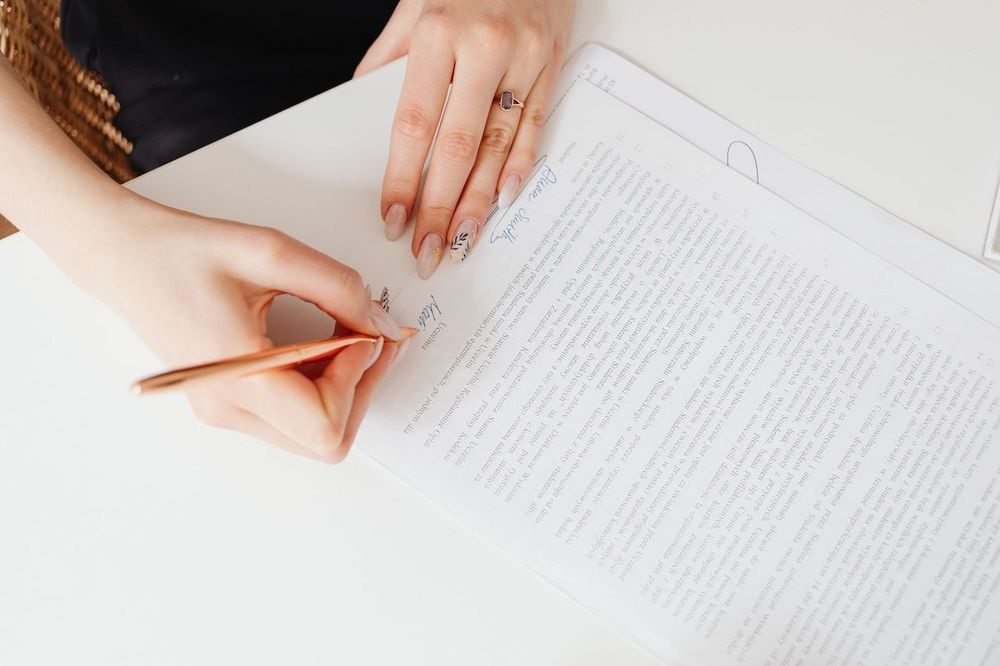
Understanding the role of confidentiality agreements in protecting your intellectual property
Although a confidentiality agreement is not a substitute for copyright ownership and intellectual property protection, it's a common legal practice for protecting your IP. A confidentiality agreement is a legal contract that restricts the use and disclosure of confidential information between two or more parties.
You can use a confidentiality agreement to protect your IP by requiring that your client and collaborators are restricted from using or disclosing your trade secrets and confidential information.
When you're collaborating on a project with another party, it's important to discuss IP protection and the role of confidentiality agreements. By outlining IP ownership and rights, as well as requiring your client and collaborators to sign a confidentiality agreement, you'll help protect your IP.
Exploring insurance options for intellectual property protection
While copyright and confidentiality agreements are essential for protecting your IP, they don't provide any financial protection if your client is found guilty of violating your rights. In addition to these legal protections, you might consider insurance for IP protection.
Traditionally, insurance policies have been used to protect physical assets such as buildings and vehicles. Today, insurance companies also offer coverage for intellectual property. By purchasing an IP insurance policy, you can protect your copyrights and provide financial compensation if your client is found guilty of violating your rights. It's important to note that IP insurance isn't a substitute for copyright and intellectual property protection. It is, however, an important tool to protect your IP and provide financial protection if a client is found guilty of violating your rights.
Staying up-to-date on intellectual property and copyright law and best practices
It is important to stay up-to-date on the ever-changing copyright law and copyright protection.
As a graphic designer, you need to protect your original work (i.e., your visual arts, graphic designs, or literary works) to be properly attributed to you.
Therefore, you need to follow portals that focus on copyright laws and best practices.
You can start by researching and following these options:
- Designers Daily News
- A blog by Freelance Designers (or an in-house designer)
- Creative Commons
- A website that hosts how-to guides and educational materials
- How Design Works
- Computer Arts
- A magazine that covers visual design, film, and more
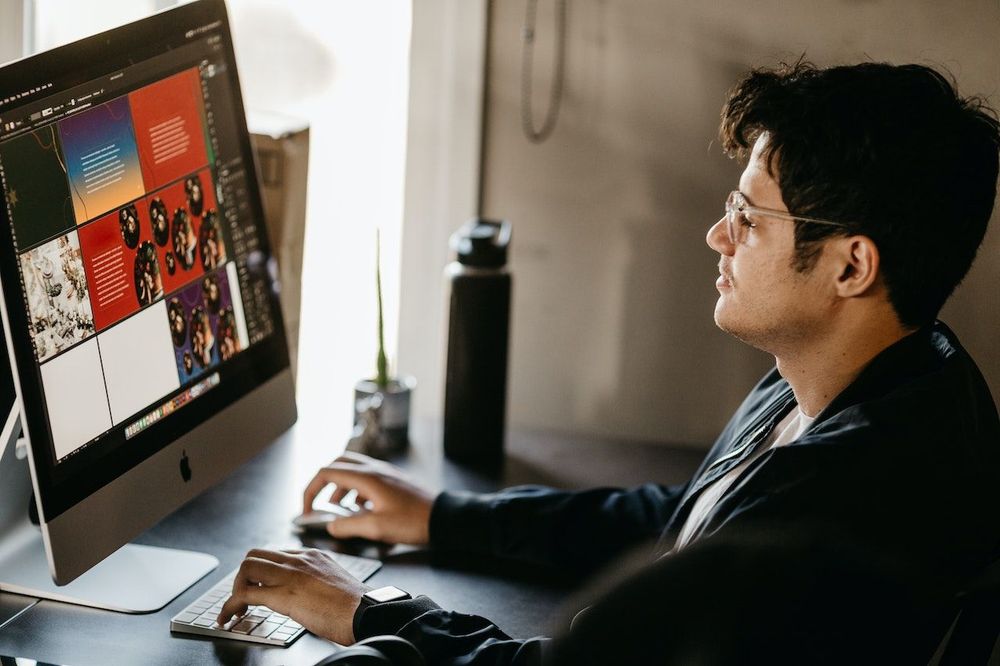
Resources for a freelance graphic designer to learn more about intellectual property
There are many ways for graphic designers to get up-to-speed on intellectual property law and copyright. We recommend that you brush up on these topics and learn more about them. Doing so can help protect your original work and ensure that you're compensated fairly when working with clients.
Courses: Designing in a Digital Age - This course is taught at the School of Visual Arts in New York by Joanna Wiebe. It covers the basics of copyright law and how to protect your work.
Books: Designing a Business - This book is written by Scott Plenke and covers the basics of intellectual property and copyright law. It’s a great book for beginners, professionals, and anyone who wants to better understand copyright law.
Government Policy: The US Copyright Office has a public database that allows you to search for government policies regarding copyright law.
Summary
Designers face many challenges on the journey to building a successful design business, but one of the biggest is understanding and protecting your intellectual property (IP). From understanding the difference between copyright and IP to knowing how to protect your work, designers have all the tools they need to succeed. Now, it’s time to put these lessons into action.
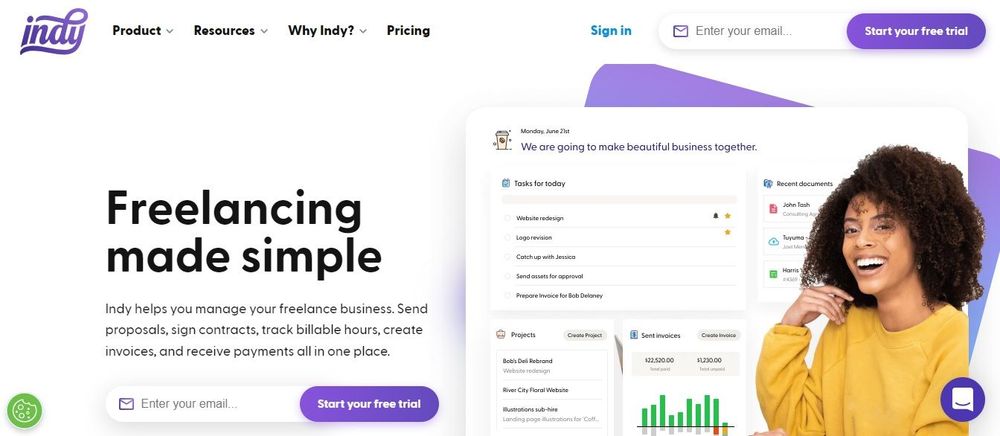
You can check out Indy’s free Contracts tool to create legally-vetted contracts in minutes that will keep your designs protected.

